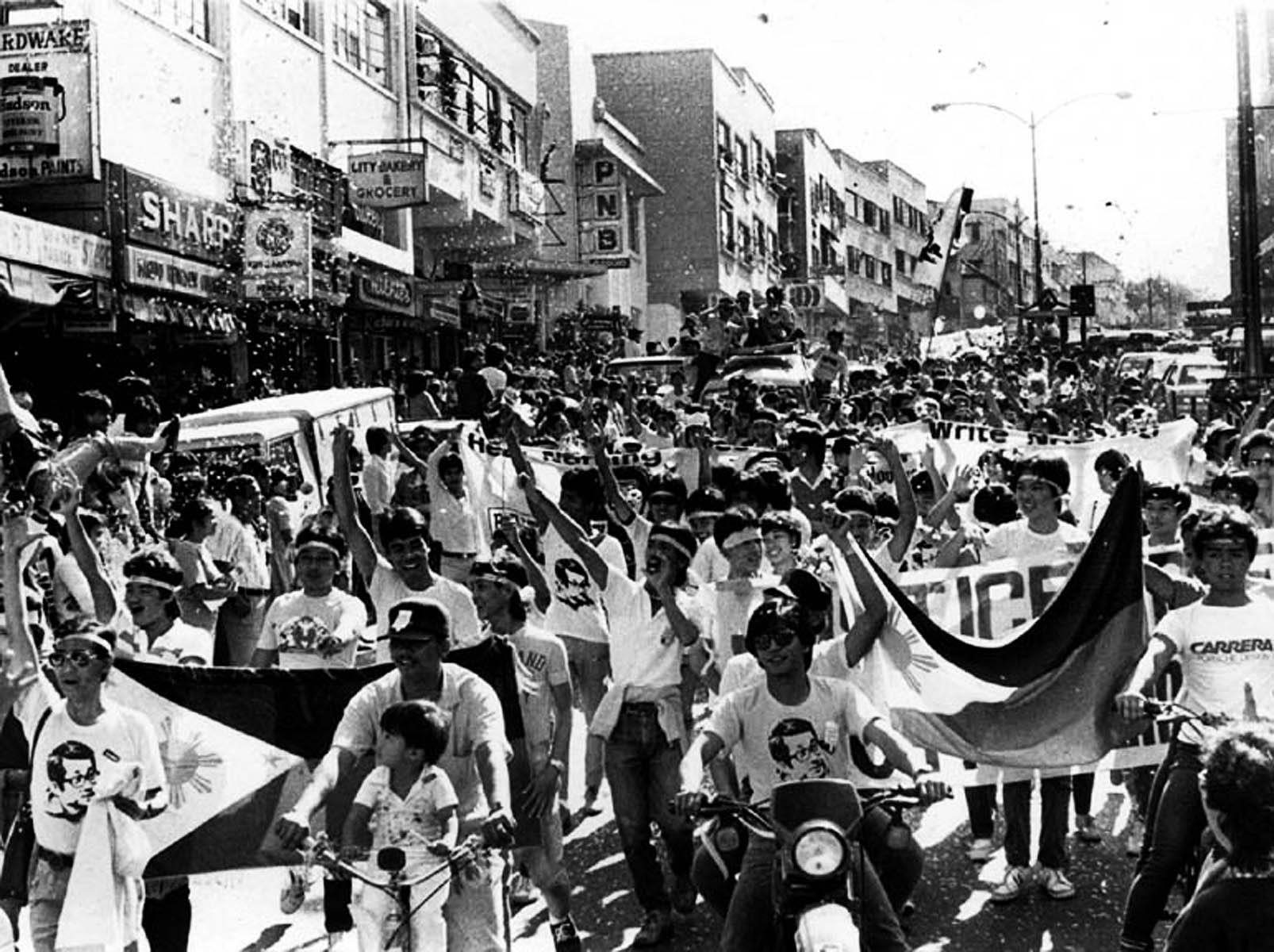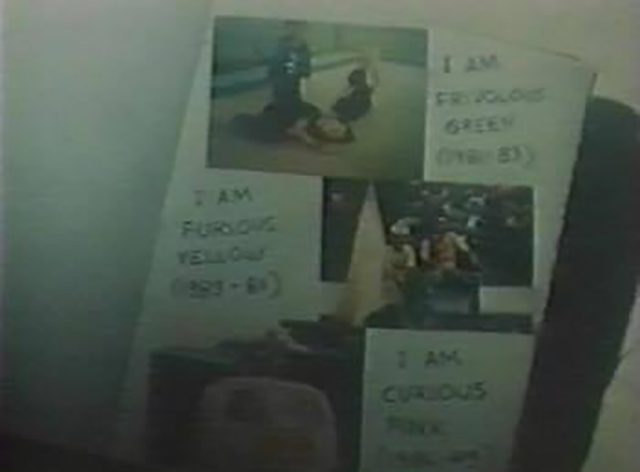SUMMARY
This is AI generated summarization, which may have errors. For context, always refer to the full article.

BAGUIO CITY, Philippines – Like Cebu, Davao, Bacolod, and other big cities, Baguio had a simultaneous People Power Revolution in February 30 years ago. What set the so-called Baguio EDSA apart was one person: Kidlat Tahimik, then still known by his real name Eric de Guia.
Tahimik may have been born and raised in Baguio, but he and his family had just resettled in Baguio when the EDSA Revolution occurred. Events leading up to it – including the snap election – were duly recorded by Tahimik with his vintage Super 8 Camera and eventually became part of his work Why Is Yellow the Middle of the Rainbow? (“Bakit Dilaw ang Kulay ng Bahaghari?” aka “I am Furious…Yellow”).
Yellow was his letter in video to eldest son Kidlat de Guia, who was then studying in SPED Baguio.
There was footage of the enigmatic Madame Chang, proprietor of Old Pagoda, that quaint gift shop along Session Road. Madame Chang decided to migrate to Canada when things were becoming volatile in the Philippines.
There was footage of Kidlat Sr in their United Nations parade. There was Kidlat Jr (as it turns out, the Jr is the father) carrying his ailing father, engineer Victor de Guia, after he voted in the snap elections at the Josefa Carino Elementary School.
The video letter is 175 minutes long and said to be Tahimik’s magnum opus until he finally completed his 30-years-in-the-making Balikbayan film in 2014.
But part of Yellow – about 14 minutes – was archived by the Malacañang Palace as part of its multimedia exhibit about the EDSA Revolution, making the Baguio EDSA memorable indeed.

The first point of the Baguio EDSA Triangle was the De Guia Building (now known as the Azotea Building), where Kidlat Tahimik was encamped. You can see the building in the Yellow film through the large yellow sunflower on a green sheet with the word “Mabuhay” below it.
The second point is the now defunct Café Amapola in what is now the PLDT Building at the corner of Session Road and Governor Pack Road. It was an art café owned by Peachy Prieto and Briccio Santos. It was the Ground Zero of the Cory Aquino for President Movement (CAPM) in Baguio then.
CAPM was composed of prominent people from the Baguio opposition like Bennie Carantes, Pablito Sanidad, Rene Cortes, Baboo Mondonedo, Art Galace.
Of course, Baguio was Marcos country then. But CAPM, with its young volunteers, made it interesting. Some of the volunteers were harassed, but they had the most fun with turkey sandwiches and margarita pitchers. Cory lost in Baguio amid complaints of fraud and disenfranchisement.
And then EDSA erupted. Although Radyo Bandido couldn’t be accessed in the highlands, Baguio residents were still updated about what was going on because of AFRTN (Armed Forces Radio and Television Network) that was broadcasting for the Americans in Camp John Hay.
CAPM reconvened on February 24, 1986, and they decided that Café Amapola would be too dangerous as headquarters. They looked heavenward and saw the Baguio Cathedral, and so stayed in its premises.
On February 25, the jeeps and cars used in the Cory campaign went to Camp Dangwa to persuade the police generals to defect. It was a long happy convoy (see Yellow) but no such luck. The Dangwa higher-ups decided to be loyal to Marcos. There was an exception, one Baguio policeman who decided to surrender his firearm to the CAPM guy. So the Baguio EDSA campaigners had one gun to protect them.
The Leftists who boycotted the snap elections also gathered on the front steps of the cathedral. They brought their gongs with them and so the place had a canao atmosphere. Some of the priests and nuns, especially those active in Namfrel, also joined in.
The CAPM decided to stay inside the cathedral. If you know your history, the Baguio Cathedral was also the last bastion of the Baguio residents at the end of World War II. That was where they stayed – except that one Filipino spy told the Americans that some of the Japanese soldiers were with the hundreds of Filipinos there, and so the Americans bombed the cathedral and hundreds were killed. This was a chilling reminder to the dozens of Baguio residents who decided to sleep at the cathedral 30 years ago.
But then AFRTN reported that Marcos had fled, and there was a rush of glee at the cathedral. The expected sleepover turned into wild cheering and drinking.
The next day was the victory parade for the Baguio residents. The CAPM and other moderates with their yellow T-shirts paraded first below Session Road, with the yellow confetti (which was reserved for the Aquino victory that never came) raining on them. Helicopters also passed by the cathedral before that, showering leaflets of victory.
The Leftists paraded as well behind the cathedral, on to Assumption, and down to Session Road, so there was that “sangandaan” (crossroads) for the two groups of marchers.
It had been showering days before that, but the sun shone for Baguio on that victorious day. Yellow was in the middle of it all. – Rappler.com
Add a comment
How does this make you feel?
There are no comments yet. Add your comment to start the conversation.